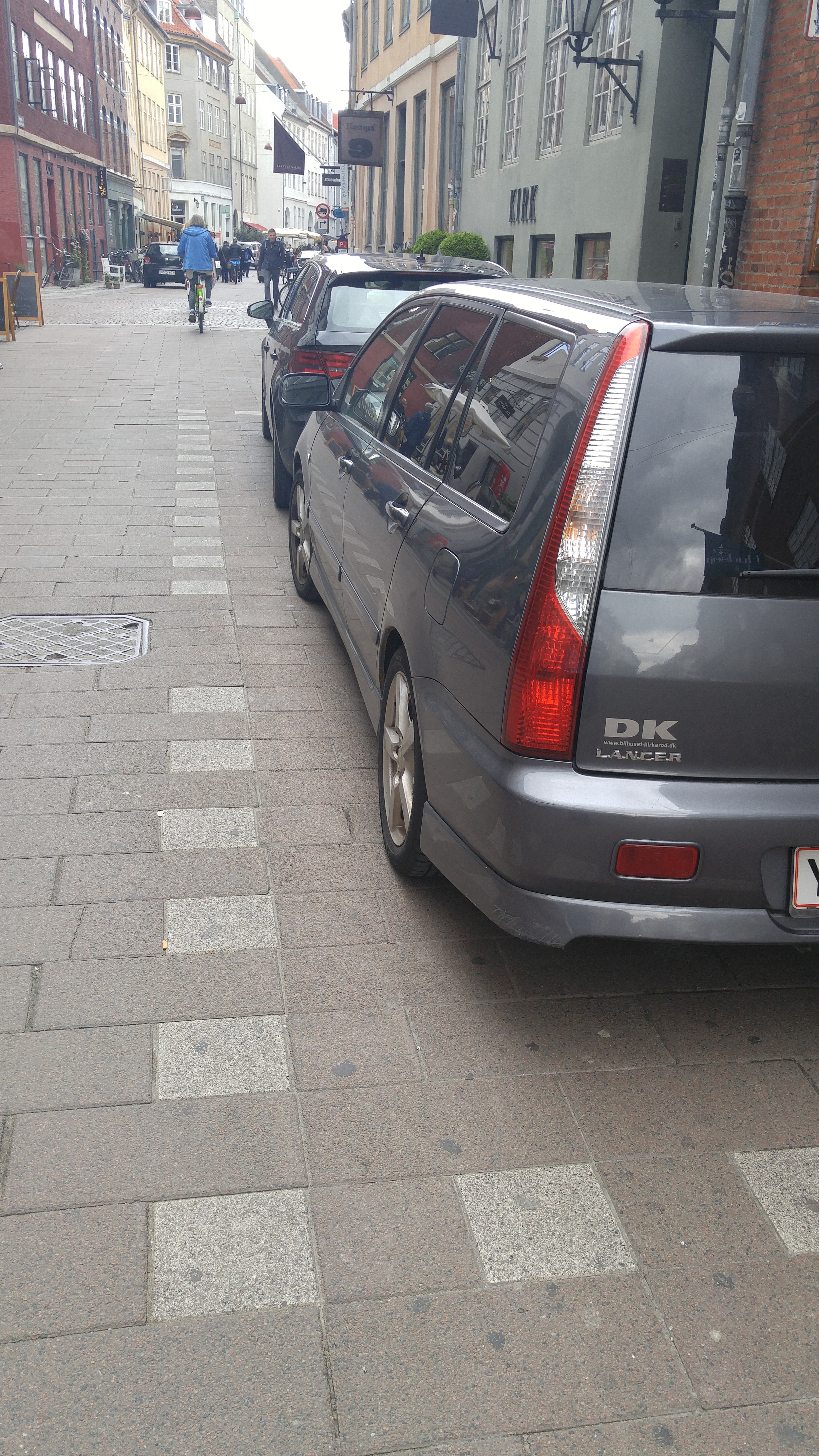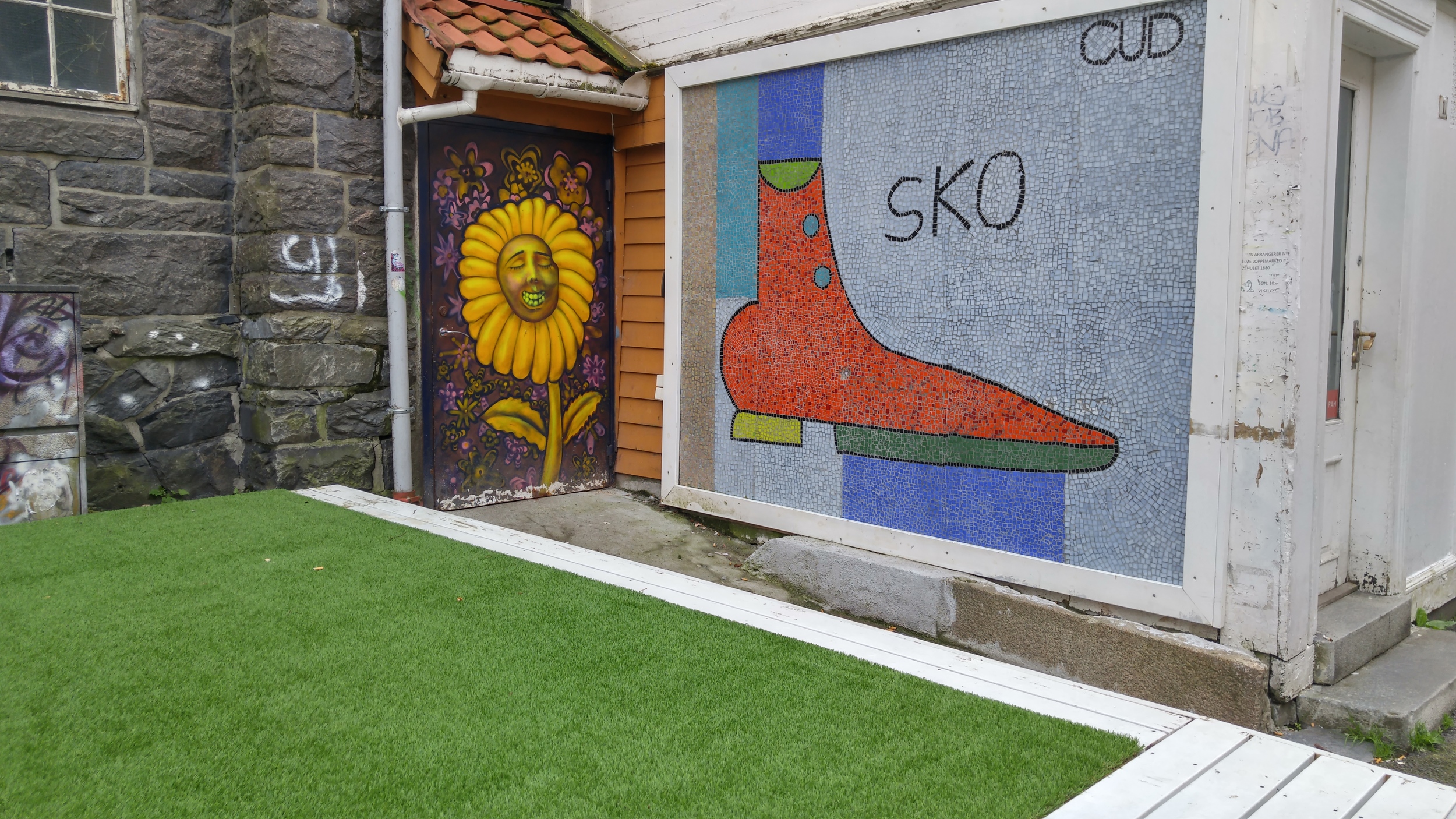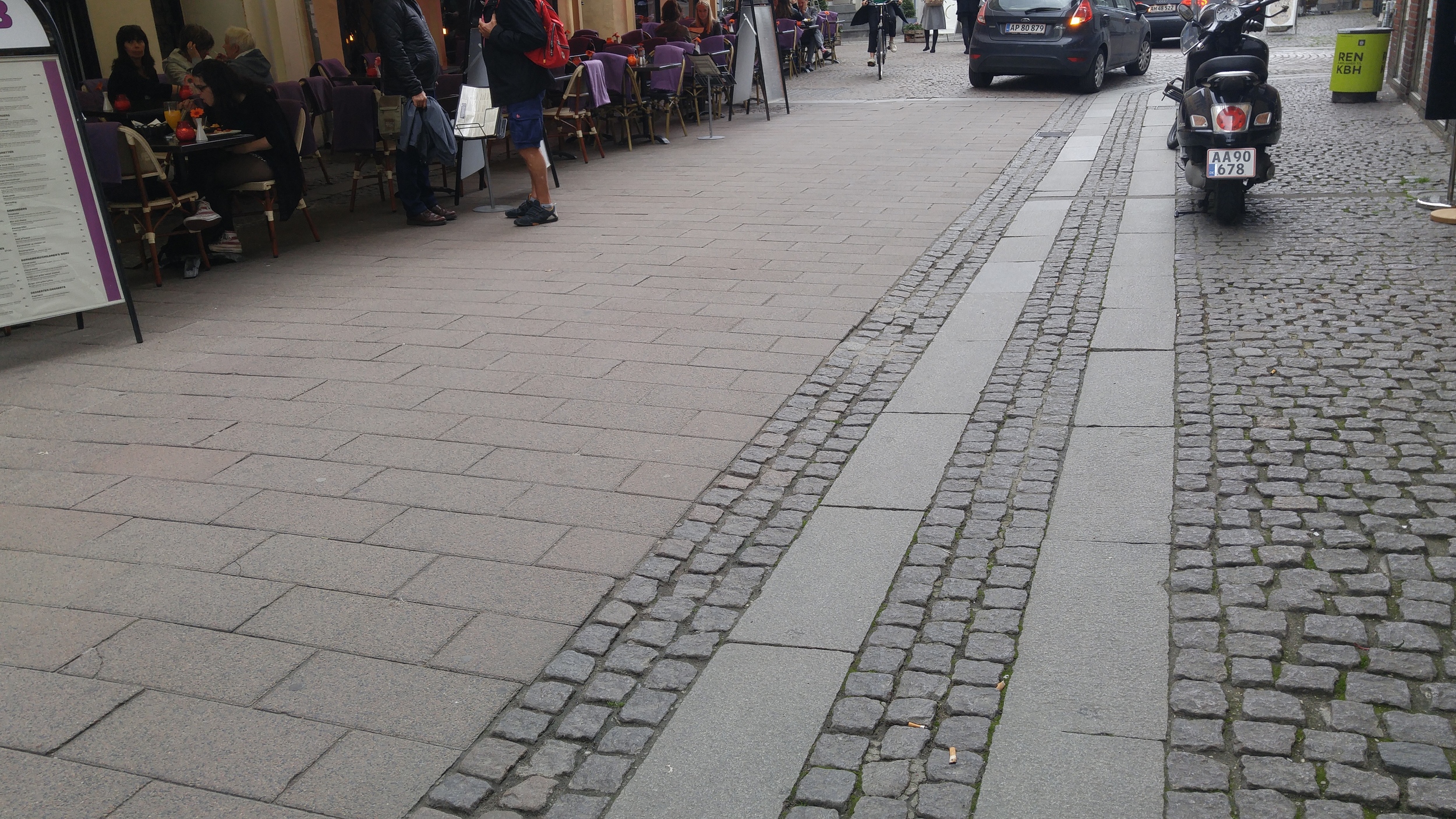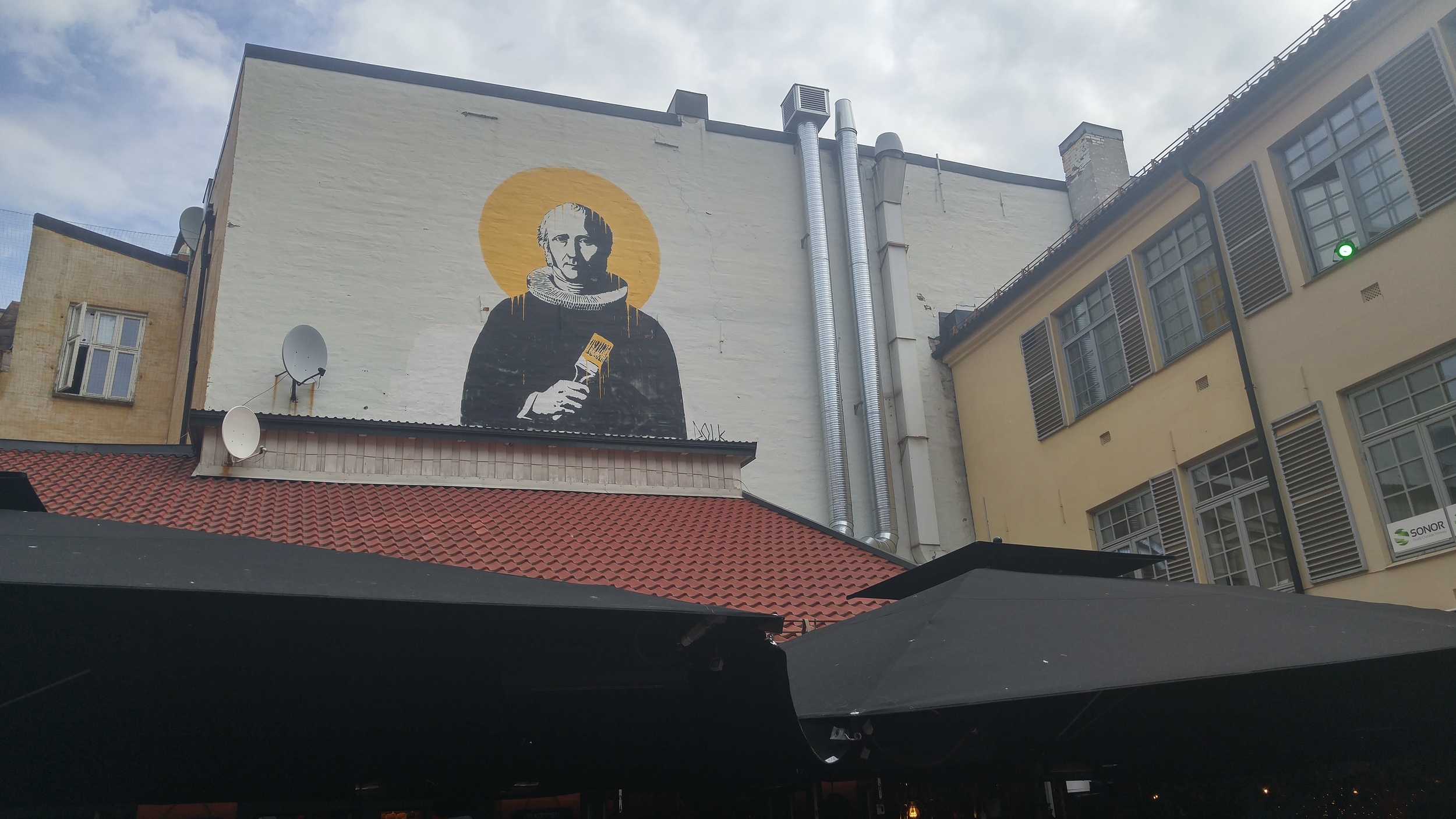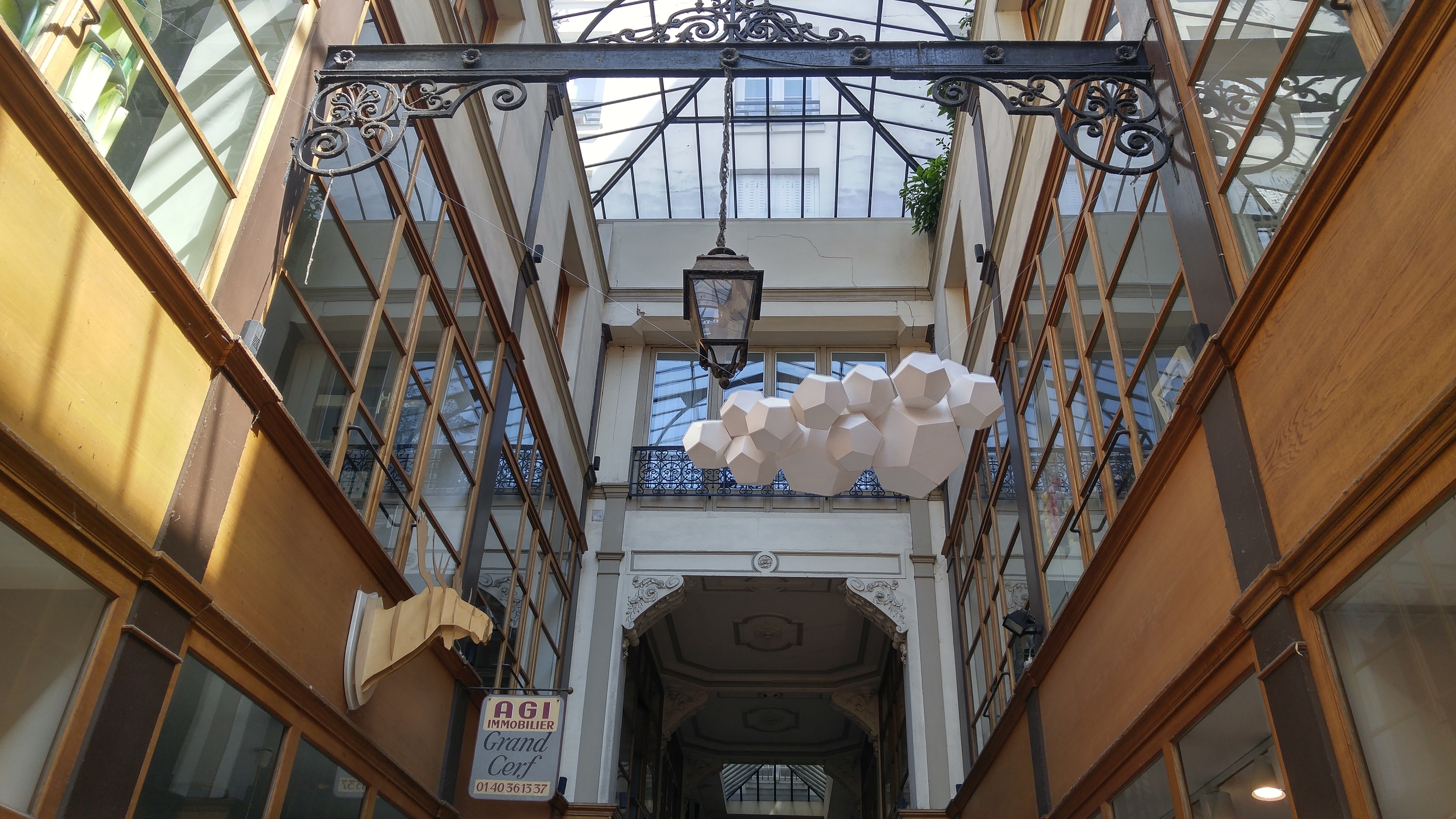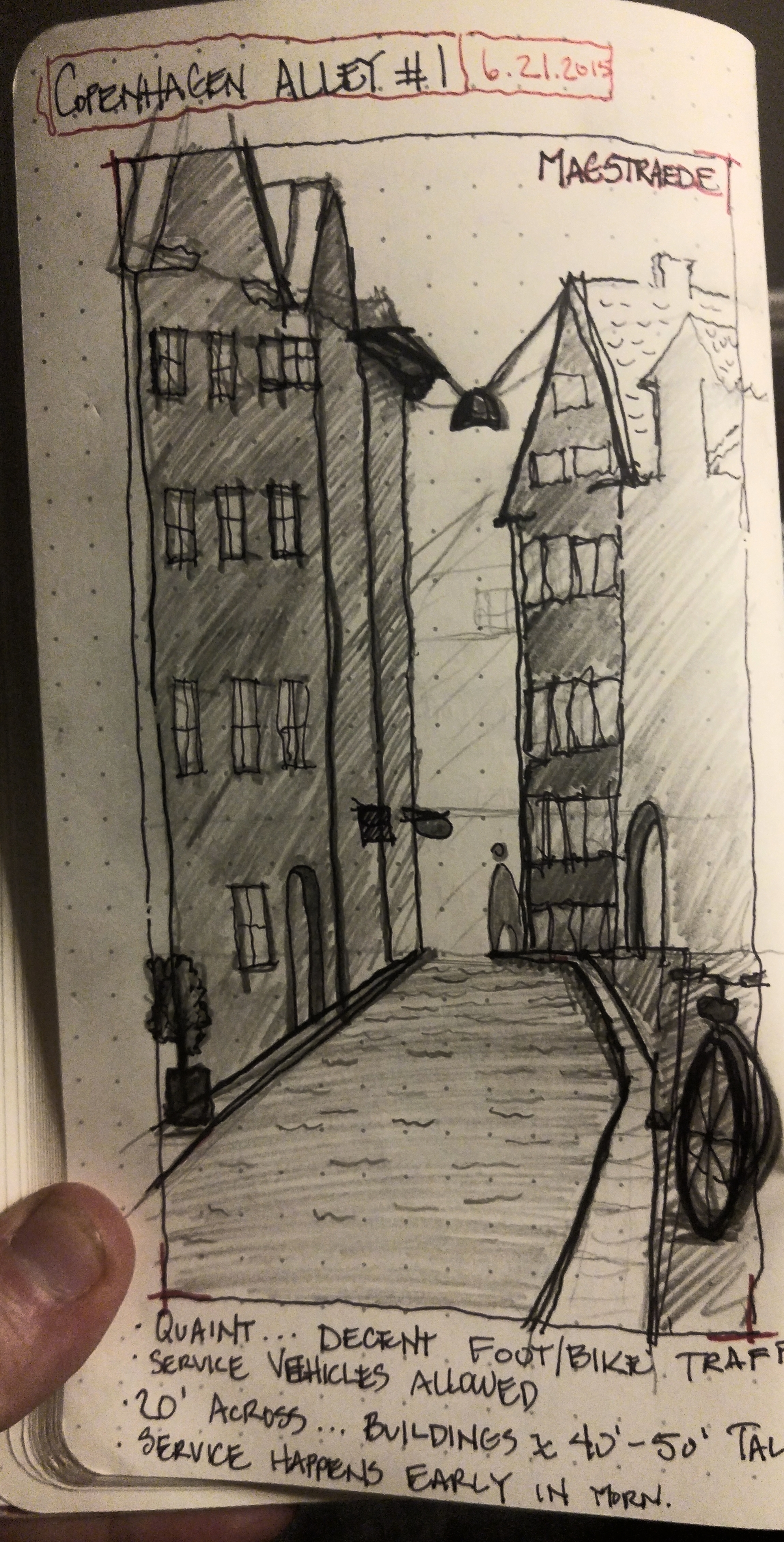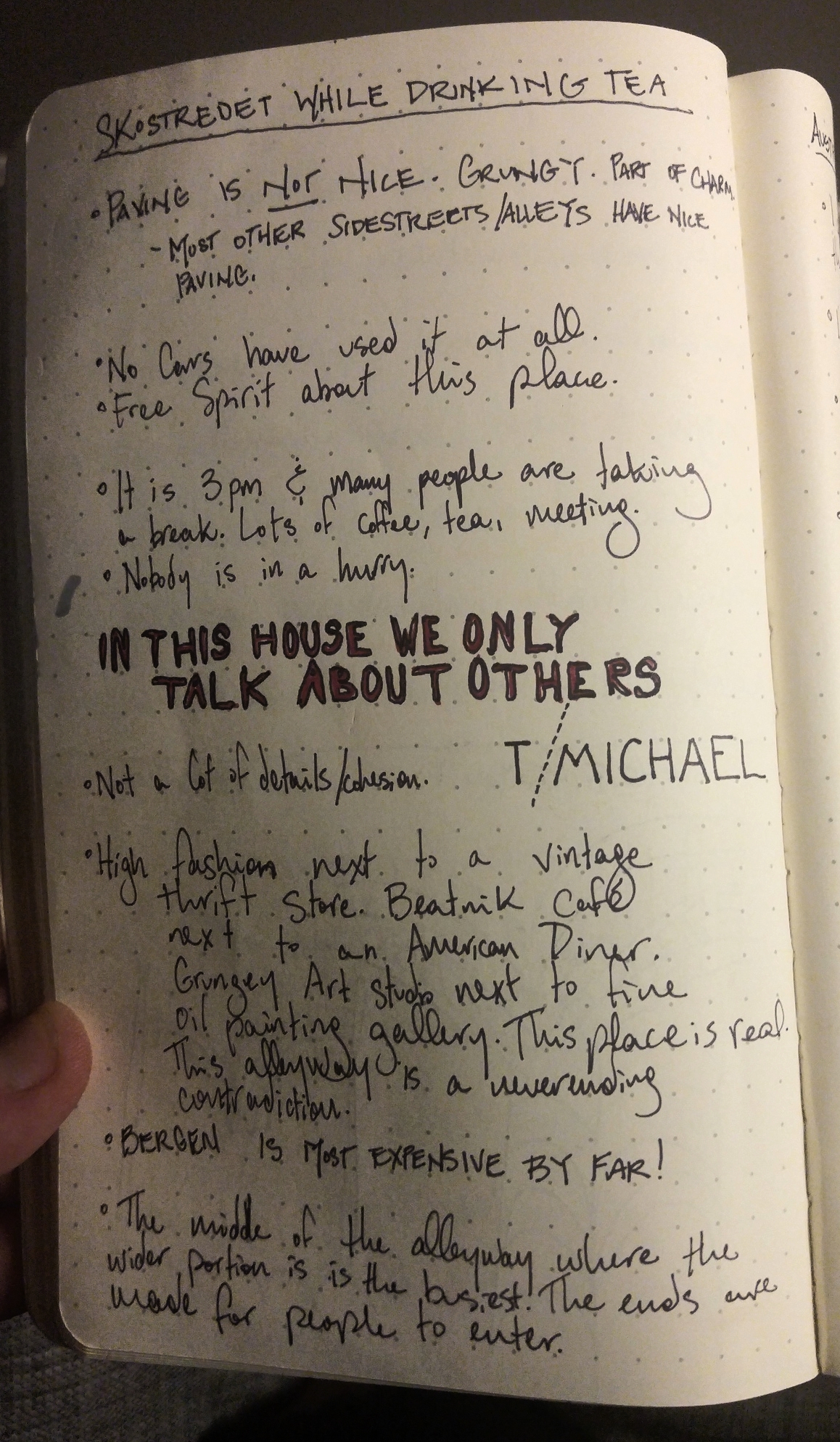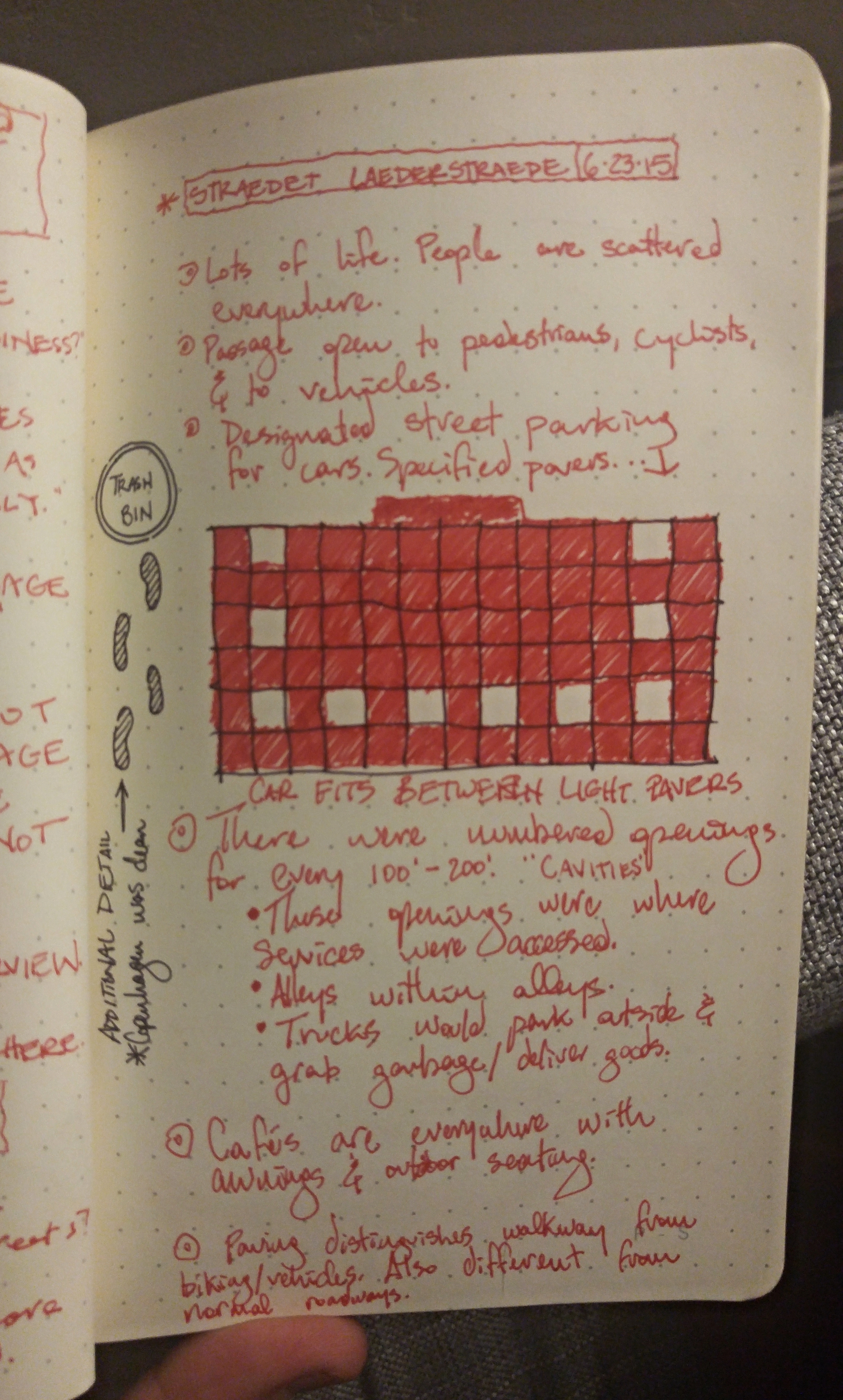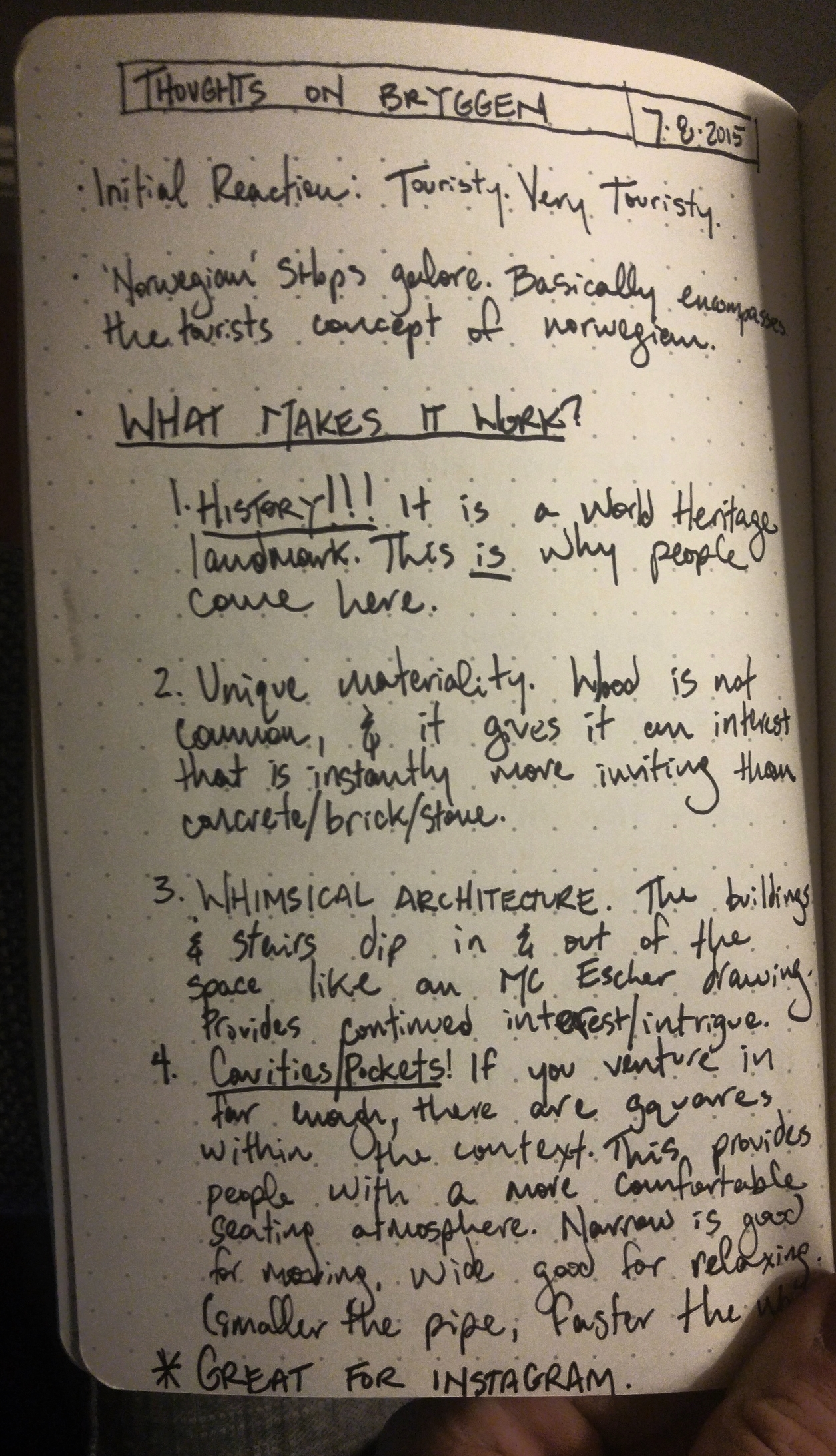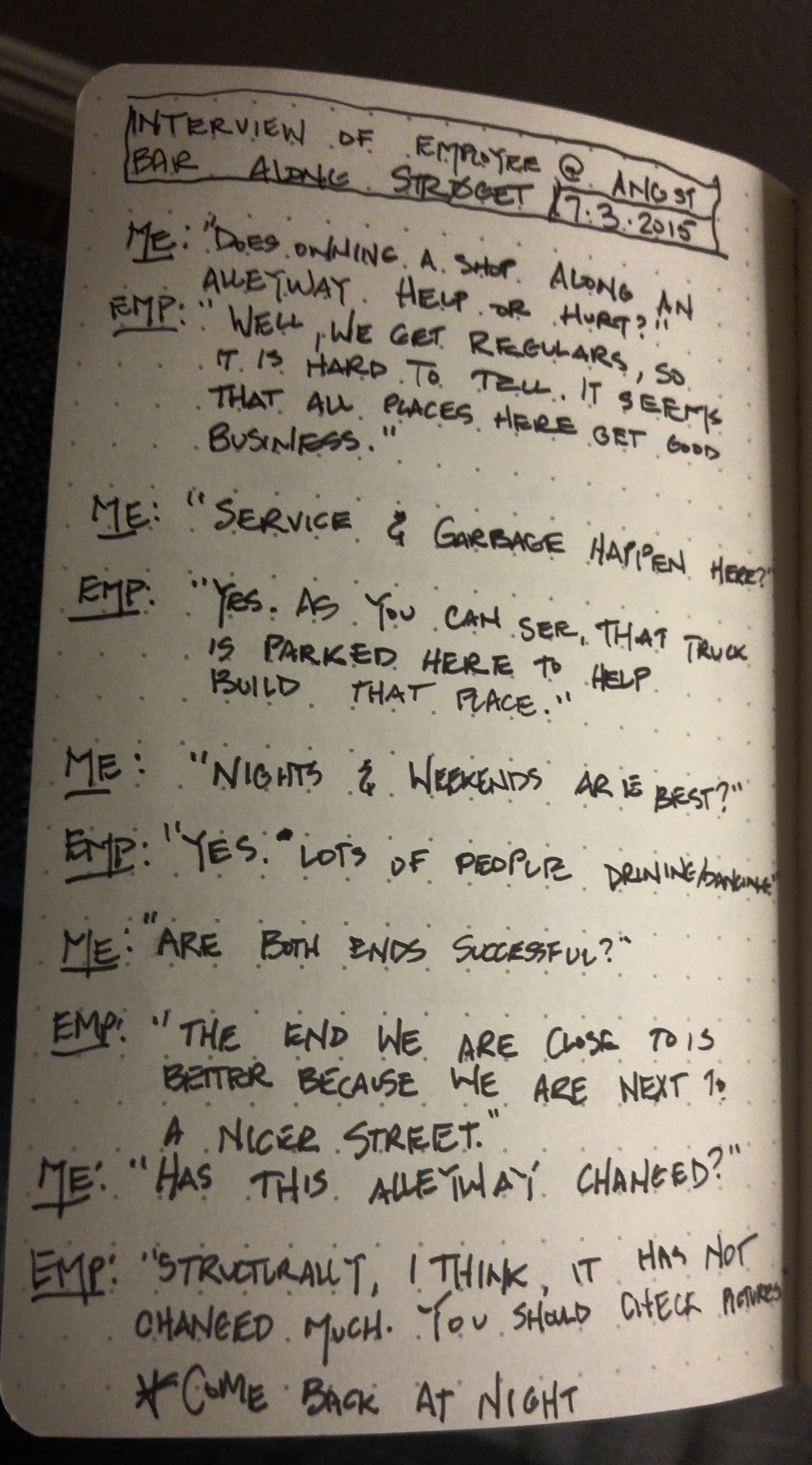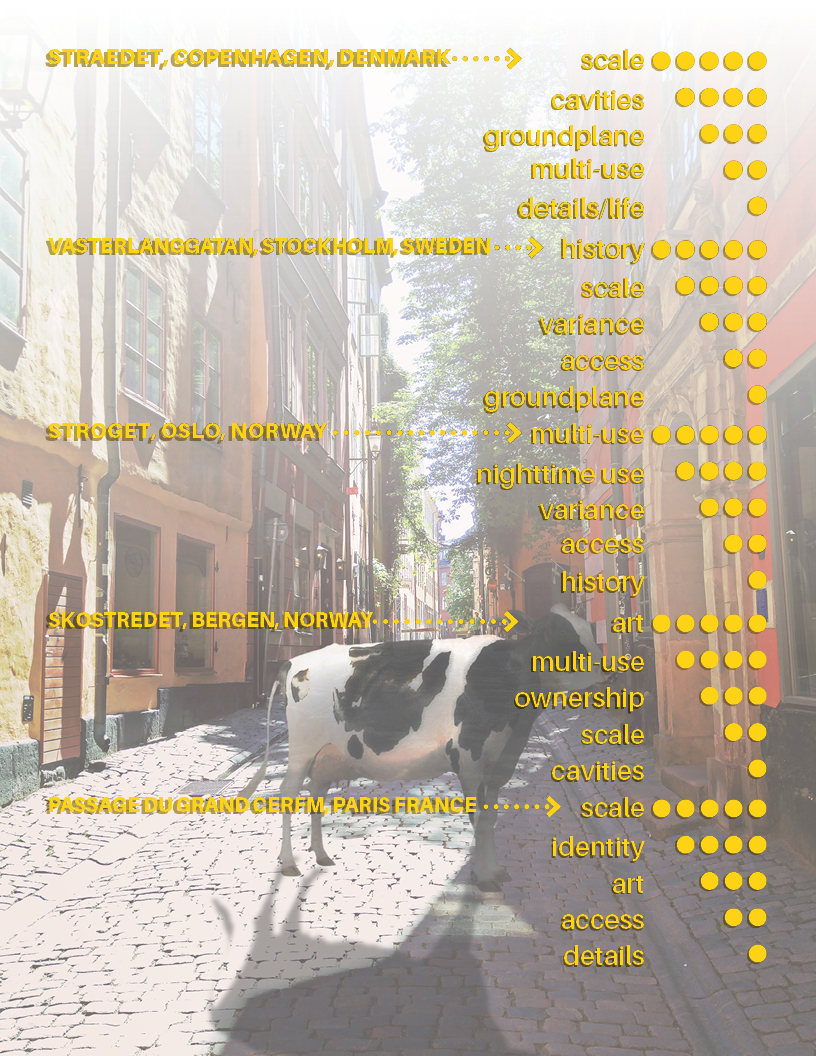It is not that I have forgotten to write here, but instead that I have been occupied attempting to maneuver the subtleties of adult life. Fear not, though, for I have cracked the code of adulthood and I have come here to scream it (type it) from the hilltops (my couch); structure and saunter. Perhaps not profound. Perhaps not even practical. But theoretically speaking, if one were to have a general structure for their larger life while allowing for curiosity, whimsy, and spontaneity to take over the smaller points of life, would that not be ideal? Though still a concept under construction, I have adapted this concept of structure and saunter to my project in hopes that it might eventually drift into my daily practice of being an adult.
While Abroad
Months ago I spoke with Michael Martin on some of the finer points of my project's intentions. While I had a grand structure set up (studying the effectiveness of alleyways in Scandinvia), I was truly floundering when it came to the finer points. Michael told me that I should simply walk around the cities with no major expectations, and just discover. I spent at least two days in each city wandering around alleyways, searching for the most proper example of a space that just seems to "work." Below are the steps that I took to document each alleyway:
1. Experience: Before I would photograph, scribe, or actively observe, I would make a point of experiencing each space. For example, while in Skostredet in Bergen, I grabbed tea at the local brewhouse and grabbed prime real estate on the patio. I didn't need to take notes at this point, for I was enjoying the space far too much.
Folk and Rovere Coffeehouse, Skostredet, Bergen, Norway.
2. Photograph: After having garnered a more grounded understanding of the space, I would set out to photograph it. It was always important to photograph the details that set each space apart. Below are some examples:
3. Scribe: Perhaps the most important of all steps was putting pen to paper. It brings me back to my most visceral reactions while abroad. Diagrams, perspectival drawings, interviews with local proprietors, and stream of consciousness scribbles. Below are a few examples:
4. Disseminate: Within a day or two I (somehow) managed to sit down in my hostel or AirBnb and would summarize my findings. This included listing the most fascinating/important components of each alleyway that seemed to "work." If I hadn't immediately summarized my impressions of each city, I would not have nearly as much, or as high of quality work to pull from for my final submission.
While 'Home'
As a sidenote, I have put quotes around 'home,' simply because I am having a difficult time entirely comprehending what that term means anymore. The more people I meet (millenials in particular), the less the term 'home' holds true in the traditional sense.
Almost immediately after returning from Paris to Chicago, I got on a plane to Sacramento for a job interview. What a fascinating sandwich of places that has become now that I have the privilege of retrospect. This series of events has disallowed me to really focus upon my final work until recently (December). Below are the steps I have taken, and continue to take, towards my final product:
1. Clarify: In each city, I came to general conclusions as to what I personally saw as the most important features of each alleyway. Here is the comprehensive list of features and accompanying descriptions that I found to be important in the collection of alleyways I studied:
Scale - The relationship of buildings, to groundplane, and users.
Multi-Use - The distinction of of having multiple programmed and unprogrammed uses.
Identity/History - Elements that provide a sense of place, thus attracting users.
Art - The use of creative material and media throughout the alleyway.
Access - The ability for all types of users to enter/use an alleyway.
Variance - The continual redefinition of space throughout an alleyway.
Cavities - The spaces that occupied the interior of a block that typically housed necessary services for an alleyway.
Nighttime Use - How comfortable and enthusiastic were users to use the alleyway at night.
Ownership - Proprietors pride in the space and likelihood to upkeep it's condition.
Details/Life - Whether spectacle or subtlety brought the space alive.
2. Rank: After distilling the major elements of space garnered from all of my studies while abroad, I then ranked each city's five most important features, with five holding the most importance and one holding the least.
3. Identify: After peering into the importance of each city, it becomes more clear that below are the most fundamental elements in the sample size of alleyways that I studied:
4. Recommend: From this point forth with all of this information compiled I plan to make recommendations. In addition to research that deciphers the history of American alleyways from that of it's European counterparts, I hope to identify the types of adaptations that we can make to our alleyways in order to have sidestreets that succeed in providing a user friendly experience.
Going into this project, there was an obvious structure. Identify what makes alleyways in Scandinavia great, and see how we can apply that knowledge to our domestic alleyways. Simple. But what was not quite as obvious was the amount of saunter I would encounter along the way. Never before have I had a project that I could identify as ongoing, and despite the deadline of the end of this academic semester for a finished product, I fully intend to flaneur like a Frenchman throughout this concept. There are so many more sidestreets to unearth, both physically and metaphysically.
News and Notes
I have officially been in California for six months. The only thing of note that comes to mind is that I wish that all months everywhere all of the time were like February in Sacramento. Beautiful weather, and blooms abound.
A few buddies and I have started piecing together a tour of the California parks system. This is of course punctuated by a summit up the cables of Half Dome in Yosemite. If you are curious what that might look like, and don't mind sweaty palms, take a peak here.
In late April I will be connecting with my family to take part in my father's induction as the President of the American Society of Golf Course Architects. Right now, nothing sounds better than Martins in Tartan.
I am currently listening to...Andrew Bird & Fiona Apple. A simultaneously ideal and unlikely duo, these two remind us that when you become a grownup that love is just as much structure as it is saunter.

